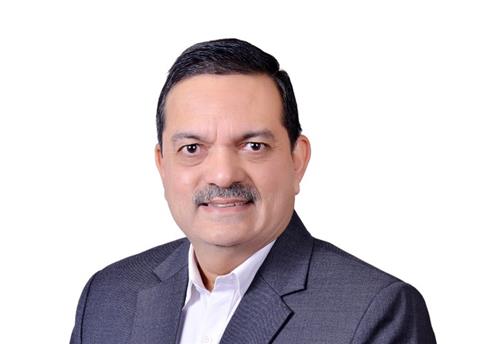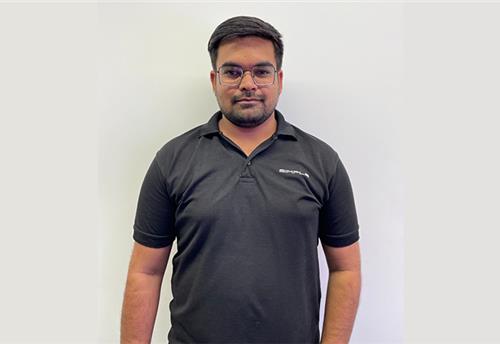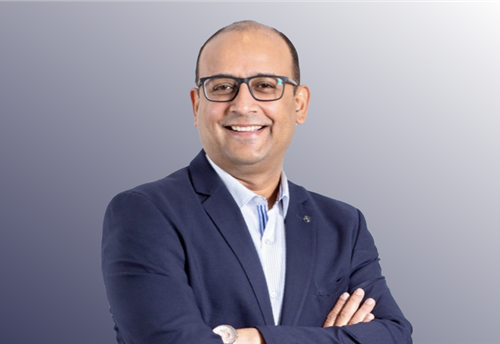Williams Controls steps on the pedal
Volvo is one of its biggest customers worldwide, and Williams pedals feature on all Volvo trucks and buses assembled in India as well, only as part kits that are shipped in from Europe. The company set up a plant in China in 2005, at which time it also began to explore the Indian market.
Today it has captured “80 percent of HCV platforms for BS3”, more specifically all those that use engines other than the mechanical BS3 evolution of Cummins’ bestselling B-series, according to Pushkar Goswami, director of its India representative Pushkaraj Engineering Enterprises.
Pushkaraj has won orders from Tata Motors and Ashok Leyland for their heavy truck programmes, is working with Cummins on a couple of projects, and anticipates engagements with AMW, Mahindra Navistar, and Volvo Eicher. Pushkar’s target is a similar share in LCVs for BS3. In this segment he is close to finalising projects with Tata Motors and Ashok Leyland Nissan, and expects to work with Daimler Hero on its first vehicles to be launched in 2010–11.
He and his engineers are also working with Cummins India and Tata engineers to applicate a pedal for the 3.8-litre Cummins ISF that will replace Tata’s venerable 497 engines in the LPT712 at the higher end of its LCV range, and in the 912 and 1109 intermediate-weight trucks. This engine is likely to go into production within a year.
New targets
Another target market is material handling and construction equipment. “We supply to Caterpillar, Cummins, and Komatsu worldwide for off-highway applications, and in India as well,” he says.
Pushkaraj chairman and MD Shailendra Pushkaraj tells Autocar Professional it has also developed a Williams pedal for the B Gas International engine that will be used on the 3,125 buses to be supplied by Tata and Ashok Leyland to the Delhi Transport Corporation under a recent tender. For most of its large OEM customers, and these include – apart from Volvo – Freightliner, PACCAR (Kenworth, Peterbilt, DAF), and Hyundai it usually customises its pedals, whereas its Indian customers would actually prefer to apply something that’s already been used somewhere else, according to vice-president (sales and marketing) Mark Koenen.
A major OEM that is developing a new truck has a very specific ergonomic setup. It’s absolutely important that all the pedals are laid out with the right proportion to the driver’s H-point. And as one of the primary functions in controlling the vehicle, the accelerator pedal is an integral part of that layout. “Those customers have sufficient scale – they are making 50,000 or 100,000 vehicles a year – that they can justify the investment in a customised product that fits exactly not only their ergonomic needs but their unique technical specifications and requirements and also the design of the cab,” Koenen says.
“For example, if you look in a Volvo truck, you’ll notice that the pedals all have the same look and feel. We only make the accelerator pedal — Volvo specifies how that’s supposed to look and we design our product to achieve that look.” To minimise the necessary investment for its Indian customers it has leveraged designs already developed for its North American customers, changing a component here or there to adapt them for dimensional differences. “That gives some comfort to the Indian customer that they are using a product that’s already been widely used in other markets, so it’s proven in the field,” he says.
Much of the customisation is in the electronic functioning of the product, he points out. Williams makes its own sensors, and the non-contact-type used in its higher-end versions are programmable. So in most cases it’s simply a matter of programming to a different profile and achieving completely different functionality between two pedals that otherwise have the same mechanical characteristics, he explains.
Koenen doesn’t see scope for Williams’s adjustable pedal systems, which are used in some niche applications, because they add quite a bit of cost to the vehicle that even truckmakers in North America and Europe have not been able to justify, achieving some of those advantages instead by means of adjustable seats and adjustable steering wheels.
India gameplan
What Koenen is more interested in is the possibilities he sees here in India for hand controls. “A lot of off-road equipment such as excavators don’t have a traditional accelerator pedal. In place of the accelerator the operator has just a rotary knob or a lever with which to control the vehicle. We’ve developed a lot of new applications there, and are now looking to them to higher and higher levels of sophistication and eventually having a joystick control with all the electronic functionality integrated into that unit,” he says.
The company counts Caterpillar, Komatsu, and Volvo CE among its construction equipment customers worldwide, and Pushkar acknowledges this is another target market, together with material handling, in which Williams have captured some significant new business worldwide.
Koenen points to the North American market, where too the smaller industrial equipment is not yet electronic. “I think there will be a convergence between India and North America where some of these developments will happen at roughly the same time, whereas you had a lag between when electronics was prevalent in North America and India in the larger commercial vehicles.”
Sales volumes today are at a very “moderate” 3,000–5,000 for BS3 and BS4 applications, but according to the OEMs’ plans for the next five years this could go up to around 100,000 a year, Shailendra Goswami says. “Whatever the size of the market, our objective is to maximise our share. We have 80 per cent in NAFTA, and we would like to have a similar status in India.”
“The market for medium and heavy trucks has been around 250,000. As infrastructure gets better, and the market shifts to heavier trucks with more powerful engines, that number is projected to grow to 400,000. But clearly, even at today’s level, if they’re all BS3 then, that’s a big market,” Koenen says. Williams’s target market of 200,000 units is roughly the same size as the North American market at present and one of only four truck markets of this size, Koenen points out. “So I don’t care if India grows at 10 percent or 5 percent. It will still be a big market. We don’t worry how big the market will be in a particular year, because we know that three years down the road, those trucks will be predominantly BS3.”
Shailendra Goswami expects the “onslaught” of demand to come in 2010, when BS3 is scheduled to be extended across the entire country. In the mean time, Williams has extended its product range downwards to include products for 1-tonne LCVs like Tata’s Ace, he reveals: “When this vehicle falls into the BS3 bracket we will also have an application for it.”
The company also has plans to set up a local assembly unit, most likely in Pune, when the volumes pick up in 2010. The roadmap and the blueprints are ready, he adds. “The moment we get the go-ahead, it will be a matter of 6–8 months for us to buy the land, set up a factory, and start production. Supply to OEMs will then move here from the China plant.”
An eventual decision to manufacture sensors will be based on cost and economies of scale, Shailendra says. “If the landed cost of a part from an existing plant which has been validated, which has been supplying it to us for a long time, is cheaper by even five percent, it makes sense for us to pass on that cost advantage to our customer. And this is exactly what we have discussed with our customers. We would certainly like to indigenise, but it has give us some value-addition, a cost or logistical advantage — only then will we consider it.”
Meanwhile Williams has already upped its level of low-cost sourcing in India, Koenen admits. “Our global sourcing head has been to India three or four times. Especially as we look at developing a production capability here in the next year or two, market conditions permitting, we obviously will be sourcing more in India.”
RELATED ARTICLES
'ADAS' crux lies in its proactive approach to safety enhancement': TaMo's Mohan Savarkar
Savarkar writes about the role of Active Safety Technology and ADAS in Compact Cars in augmenting inclusive vehicle safe...
Maintenance 101 for your electric two-wheeler, a cheat sheet for a breezy ownership experience
The experience of owning electric bikes is new, and remaining informed, aware and proactive will help in becoming better...
How technology can advance traffic enforcement for safer roads
By ensuring that only qualified drivers occupy the roads, authorities can substantially reduce the risk of accidents ste...





 By Autocar Pro News Desk
By Autocar Pro News Desk
 05 Dec 2008
05 Dec 2008
 12310 Views
12310 Views









